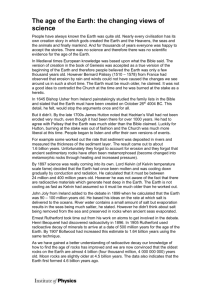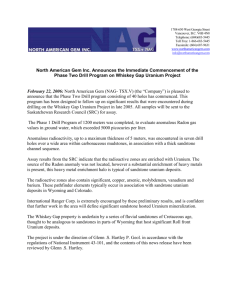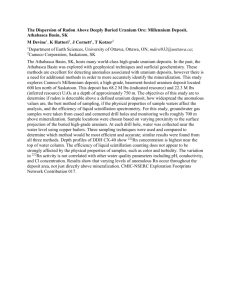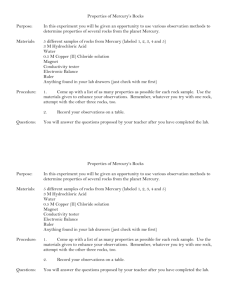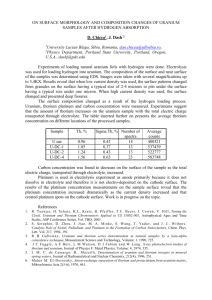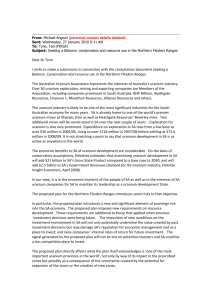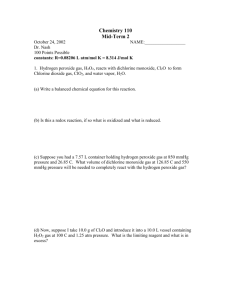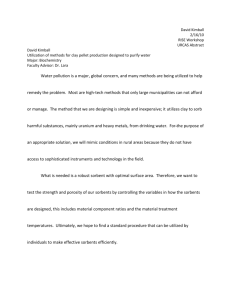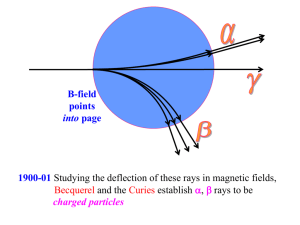Age of our planet Geologists have an interior deep in the Northwest
advertisement
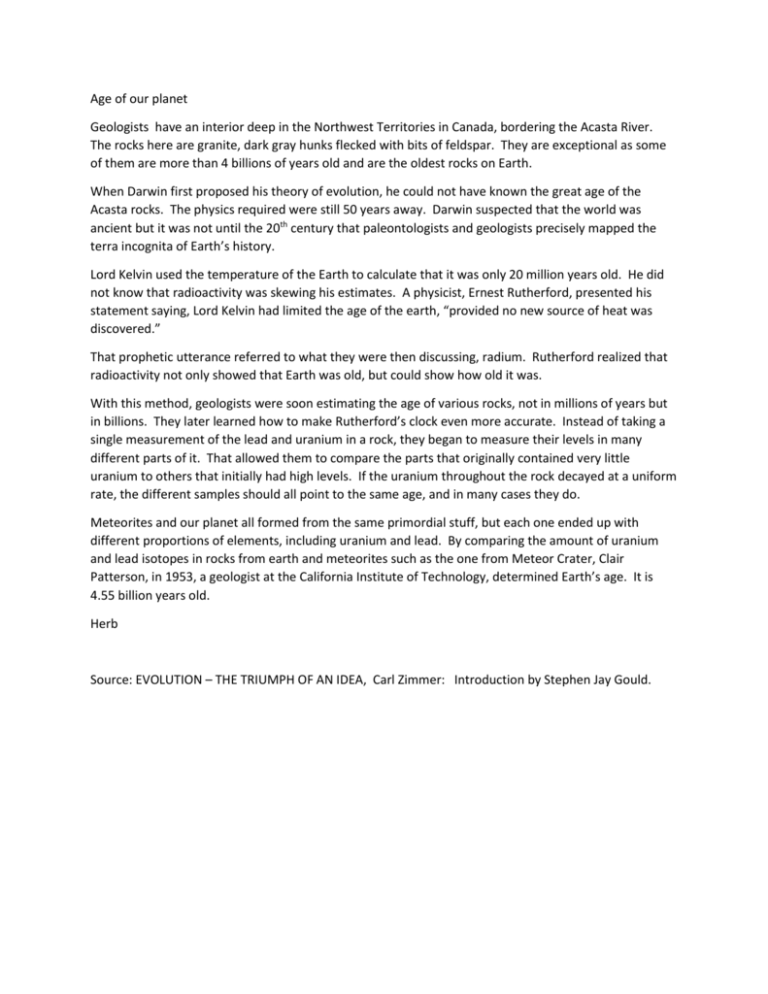
Age of our planet Geologists have an interior deep in the Northwest Territories in Canada, bordering the Acasta River. The rocks here are granite, dark gray hunks flecked with bits of feldspar. They are exceptional as some of them are more than 4 billions of years old and are the oldest rocks on Earth. When Darwin first proposed his theory of evolution, he could not have known the great age of the Acasta rocks. The physics required were still 50 years away. Darwin suspected that the world was ancient but it was not until the 20th century that paleontologists and geologists precisely mapped the terra incognita of Earth’s history. Lord Kelvin used the temperature of the Earth to calculate that it was only 20 million years old. He did not know that radioactivity was skewing his estimates. A physicist, Ernest Rutherford, presented his statement saying, Lord Kelvin had limited the age of the earth, “provided no new source of heat was discovered.” That prophetic utterance referred to what they were then discussing, radium. Rutherford realized that radioactivity not only showed that Earth was old, but could show how old it was. With this method, geologists were soon estimating the age of various rocks, not in millions of years but in billions. They later learned how to make Rutherford’s clock even more accurate. Instead of taking a single measurement of the lead and uranium in a rock, they began to measure their levels in many different parts of it. That allowed them to compare the parts that originally contained very little uranium to others that initially had high levels. If the uranium throughout the rock decayed at a uniform rate, the different samples should all point to the same age, and in many cases they do. Meteorites and our planet all formed from the same primordial stuff, but each one ended up with different proportions of elements, including uranium and lead. By comparing the amount of uranium and lead isotopes in rocks from earth and meteorites such as the one from Meteor Crater, Clair Patterson, in 1953, a geologist at the California Institute of Technology, determined Earth’s age. It is 4.55 billion years old. Herb Source: EVOLUTION – THE TRIUMPH OF AN IDEA, Carl Zimmer: Introduction by Stephen Jay Gould.


